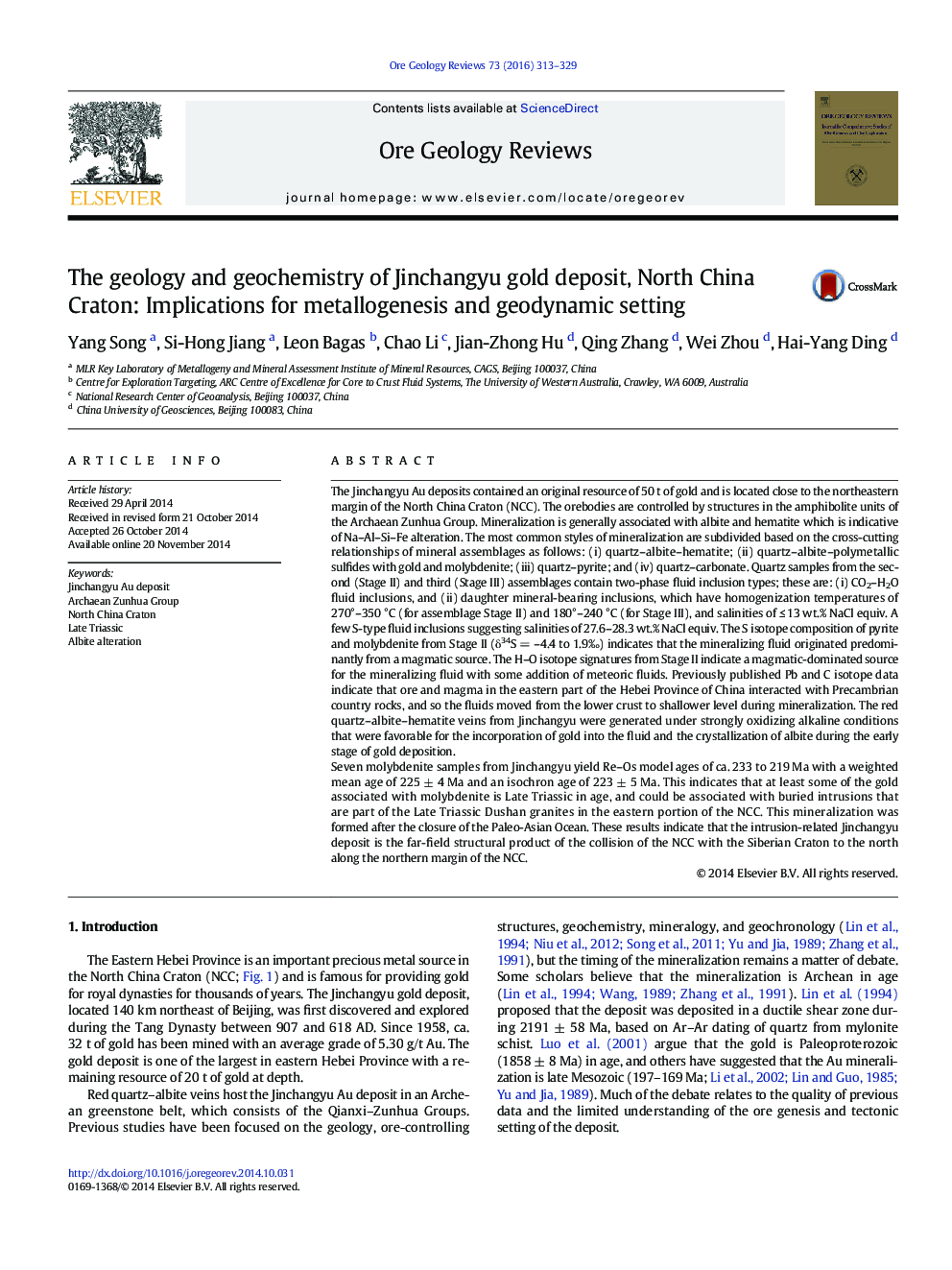| کد مقاله | کد نشریه | سال انتشار | مقاله انگلیسی | نسخه تمام متن |
|---|---|---|---|---|
| 4696923 | 1351856 | 2016 | 17 صفحه PDF | دانلود رایگان |

The Jinchangyu Au deposits contained an original resource of 50 t of gold and is located close to the northeastern margin of the North China Craton (NCC). The orebodies are controlled by structures in the amphibolite units of the Archaean Zunhua Group. Mineralization is generally associated with albite and hematite which is indicative of Na–Al–Si–Fe alteration. The most common styles of mineralization are subdivided based on the cross-cutting relationships of mineral assemblages as follows: (i) quartz–albite–hematite; (ii) quartz–albite–polymetallic sulfides with gold and molybdenite; (iii) quartz–pyrite; and (iv) quartz–carbonate. Quartz samples from the second (Stage II) and third (Stage III) assemblages contain two-phase fluid inclusion types; these are: (i) CO2–H2O fluid inclusions, and (ii) daughter mineral-bearing inclusions, which have homogenization temperatures of 270°–350 °C (for assemblage Stage II) and 180°–240 °C (for Stage III), and salinities of ≤ 13 wt.% NaCl equiv. A few S-type fluid inclusions suggesting salinities of 27.6–28.3 wt.% NaCl equiv. The S isotope composition of pyrite and molybdenite from Stage II (δ34S = –4.4 to 1.9‰) indicates that the mineralizing fluid originated predominantly from a magmatic source. The H–O isotope signatures from Stage II indicate a magmatic-dominated source for the mineralizing fluid with some addition of meteoric fluids. Previously published Pb and C isotope data indicate that ore and magma in the eastern part of the Hebei Province of China interacted with Precambrian country rocks, and so the fluids moved from the lower crust to shallower level during mineralization. The red quartz–albite–hematite veins from Jinchangyu were generated under strongly oxidizing alkaline conditions that were favorable for the incorporation of gold into the fluid and the crystallization of albite during the early stage of gold deposition.Seven molybdenite samples from Jinchangyu yield Re–Os model ages of ca. 233 to 219 Ma with a weighted mean age of 225 ± 4 Ma and an isochron age of 223 ± 5 Ma. This indicates that at least some of the gold associated with molybdenite is Late Triassic in age, and could be associated with buried intrusions that are part of the Late Triassic Dushan granites in the eastern portion of the NCC. This mineralization was formed after the closure of the Paleo-Asian Ocean. These results indicate that the intrusion-related Jinchangyu deposit is the far-field structural product of the collision of the NCC with the Siberian Craton to the north along the northern margin of the NCC.
Journal: Ore Geology Reviews - Volume 73, Part 2, March 2016, Pages 313–329